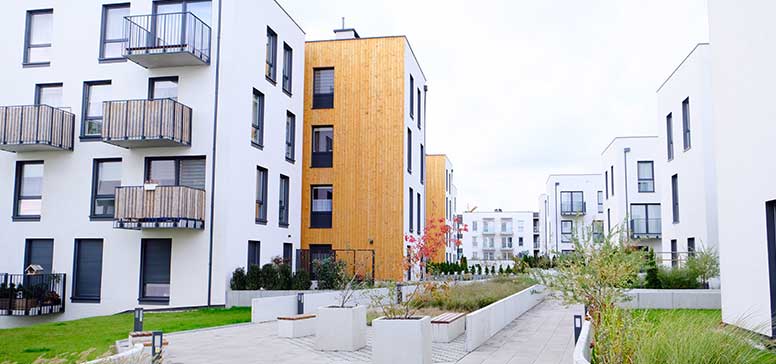Top Myths About HOA Condo Life Debunked
Top Myths About HOA Condo Life Debunked
Blog Article
The Role of an HOA in Developing and Enforcing Area Guidelines for Residents
The function of a Homeowners Organization (HOA) in applying and establishing community guidelines is fundamental to maintaining a cohesive and orderly domestic atmosphere. By developing clear policies that control facets such as building maintenance and area conduct, the HOA not just establishes criteria for citizens yet additionally fosters a feeling of belonging and liability.
Recognizing House Owners Organizations
Homeowners associations (HOAs) work as governing bodies for residential areas, playing a vital function in maintaining home values and fostering a feeling of area. Normally developed by designers, HOAs are composed of home owners within a marked area that choose a board to supervise the association's tasks. The key features of an HOA include enforcing area policies, managing common locations, and organizing neighborhood occasions.
HOAs operate under a set of controling files, including constraints, covenants, and problems (CC&R s), which detail the civil liberties and obligations of property owners. These policies intend to guarantee that residential or commercial properties are kept to a particular standard, consequently protecting the visual allure and overall worth of the area. Additionally, HOAs usually collect fees from home owners to fund maintenance, landscape design, and various other social work.
The visibility of an HOA can significantly influence the living experience within an area (hoa condo). While some residents appreciate the structured setting and amenities offered, others may locate particular regulations restrictive. Balancing the rate of interests of all home owners is important for an HOA to work successfully, ensuring that it serves its intended function of improving area living while valuing specific homeowner rights
Establishing Neighborhood Guidelines

To begin, an HOA should carry out studies or hold conferences that allow locals to articulate their tips and concerns. This participatory process promotes a feeling of possession and raises conformity. Next, the HOA board should evaluate the comments to determine usual motifs and top priorities that warrant formal addition in the standards.
It is additionally necessary to ensure that the standards are clear, succinct, and conveniently understood. Uncertainties can lead to disputes and misconceptions, threatening the objective of the standards. The standards must be detailed, covering different aspects of area living, consisting of residential property upkeep, noise degrees, and use of common locations.
Enforcement of Policies
Efficient enforcement of community regulations is vital for preserving order and ensuring that all homeowners stick to the established standards. An HOA needs to apply an click over here now organized method to impose these regulations, which often entails a combination of surveillance, communication, and penalties for non-compliance.
First, routine examinations and neighborhood patrols can help recognize infractions, ensuring that regulations are regularly used across the area. This proactive surveillance allows the HOA to resolve problems prior to they escalate, promoting a feeling of responsibility amongst residents.
Second, clear interaction is vital. Homeowners ought to be educated of the rules and the treatments for reporting offenses. An open line of communication motivates homeowners to voice worries and seek explanation on guidelines, which can boost conformity.

Last but not least, when offenses take place, the HOA has to implement repercussions as detailed in the regulating files. By efficiently enforcing rules, an HOA can grow an unified living atmosphere that shows the collective worths of its locals.
Benefits of HOA Regulations
Countless advantages develop from the application of HOA regulations, which offer to enhance the lifestyle within an area. One main advantage is the upkeep of residential or commercial property values. By applying requirements for appearances and maintenance, HOAs guarantee that homes and usual areas remain eye-catching, promoting a preferable living atmosphere that can lead to raised residential property values with time.
Furthermore, HOA regulations promote uniformity and uniformity within the area. This coherence in layout and maintenance aids to create a sense of belonging amongst residents, adding to community satisfaction and a positive environment. Established standards facilitate dispute resolution amongst next-door neighbors by browse around this web-site offering clear assumptions and methods for behavior, therefore decreasing conflicts.
An additional significant benefit is the arrangement of common facilities and solutions. Lots of HOAs take care of neighborhood centers such as clubs, swimming pools, and parks, which enhance leisure chances for homeowners. These amenities not only improve the lifestyle however additionally urge social communication.
Inevitably, the regulations stated by an HOA cultivate a well-organized, harmonious community, guaranteeing that citizens appreciate a high criterion of living while fostering a supportive environment for all property owners.
Common Challenges Faced by HOAs
In the middle of the advantages that home owners associations (HOAs) can provide, they also run into a selection of difficulties that can hinder their performance. Numerous homeowners might not participate in conferences or neighborhood tasks, leading to a detach from this source between the HOA board and homeowners.
Disputes can occur when homeowners feel that enforcement is inconsistent or prejudiced, possibly leading to disputes within the neighborhood. In addition, HOAs typically encounter financial restrictions, which can limit their capacity to maintain typical locations or fund area projects.
Furthermore, navigating lawful complexities can be daunting for HOAs. They should make certain conformity with state laws while managing their very own controling files, which can be a resource of confusion. Changing demographics and evolving community needs call for HOAs to adjust their guidelines, typically satisfying resistance from long-standing residents that are accustomed to typical standards. Attending to these difficulties is important for promoting a growing and unified area.
Final Thought

By creating clear guidelines that control aspects such as building upkeep and neighborhood conduct, the HOA not only sets standards for homeowners however likewise fosters a sense of belonging and accountability.Homeowners associations (HOAs) offer as governing bodies for property areas, playing a vital duty in preserving residential or commercial property worths and cultivating a sense of community. Lots of homeowners may not take part in conferences or area activities, leading to a disconnect between the HOA board and citizens. Transforming demographics and advancing community needs call for HOAs to adjust their standards, often satisfying resistance from enduring citizens that are accustomed to typical standards. Through the development of clear policies and constant enforcement, HOAs promote residential property upkeep, area satisfaction, and trust fund amongst homeowners.
Report this page